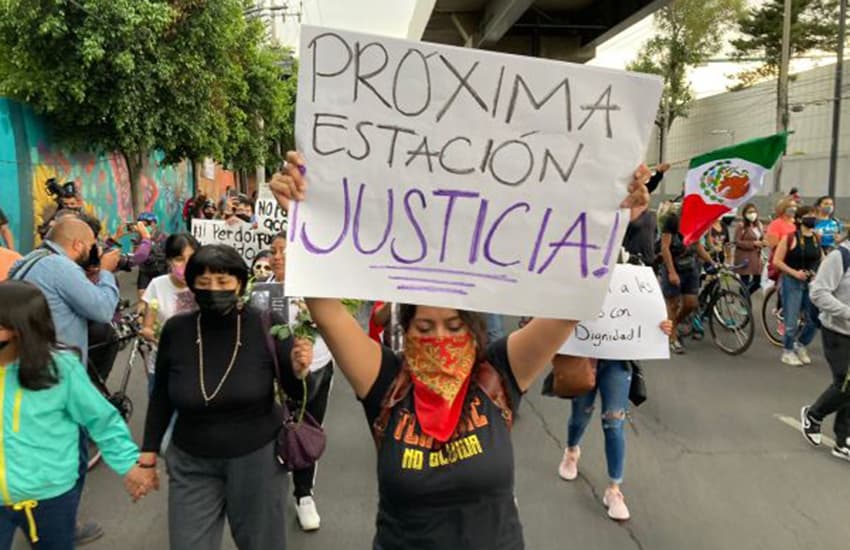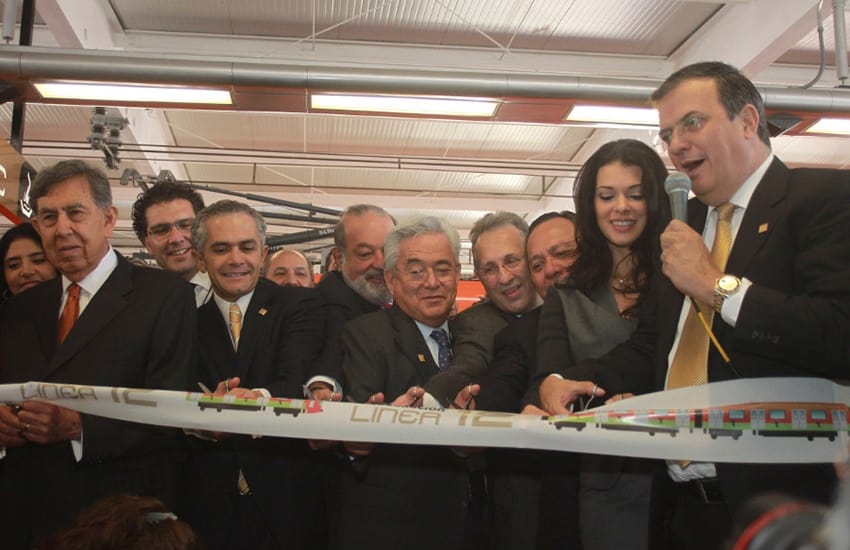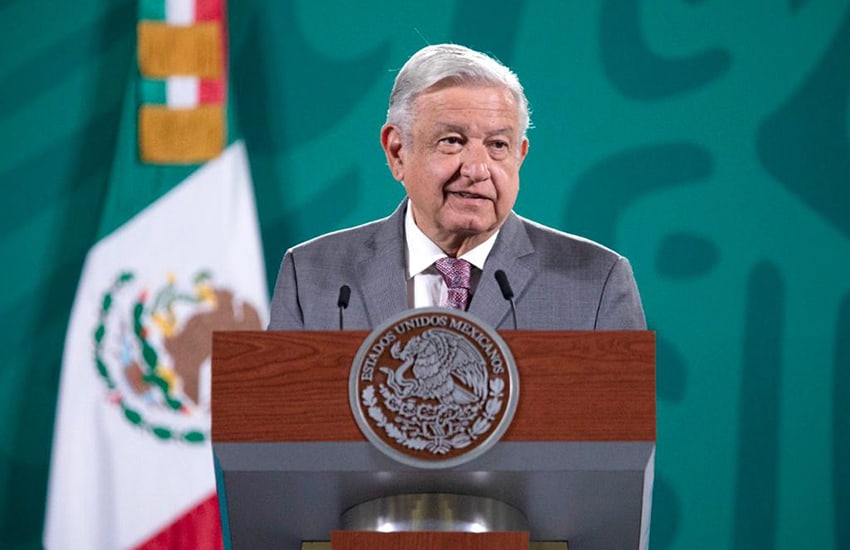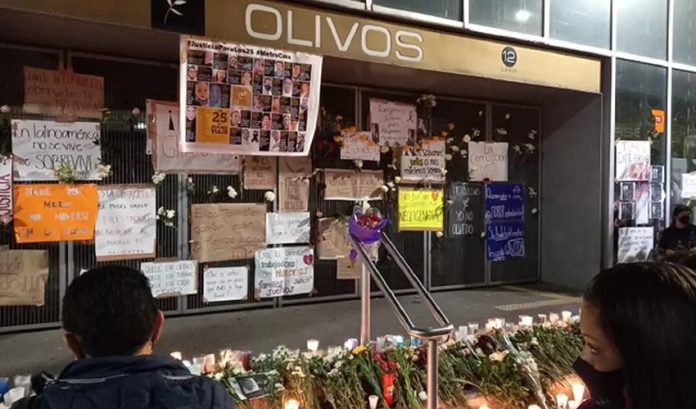A New York Times investigation has found serious flaws in the construction of the Mexico City Metro overpass that collapsed on May 3, causing two train cars to plummet some 12 meters toward traffic below in an accident that claimed the lives of 26 people.
Published Sunday, the Times investigation said the subway disaster threatens to ensnare two of Mexico’s most powerful figures: Foreign Minister Marcelo Ebrard, who was Mexico City mayor when the Metro line where the accident occurred was built, and billionaire businessman Carlos Slim, whose company Carso Infrastructure and Construction built the section of Line 12 that collapsed.
The Times said that its probe, which was based on years of government records, interviews with people who worked on construction of Line 12 and expert analysis of evidence from the site of the crash, “found serious flaws in the basic construction of the Metro that appear to have led directly to its collapse.”
Thousands of photos of the crash site, located in the southeast of Mexico City, were reviewed by several leading engineers who reached the same conclusion, the newspaper said: “The steel studs that were vital to the strength of the overpass — linchpins of the entire structure — appear to have failed because of bad welds, critical mistakes that likely caused the crash.”
The Times said it was told by people familiar with the official investigations that the conclusion that bad welds of metal studs connecting steel beams to a concrete slab caused the overpass to collapse is one of the main explanations for the crash that is under consideration by city officials.

The apparently shoddy construction may be the result of rushing to complete construction because Ebrard wanted to open Line 12 before his term as mayor concluded in 2012 in order to boost his future political prospects, the newspaper said.
The approximately US $2 billion line, which runs across southern Mexico City from Mixcoac in the west to Tláhuac in the east, has been plagued by problems since it opened, and about half of the line was out of service for months in 2014 as structural repairs were carried out.
The rush to finish the so-called Golden Line resulted in “a frenzied construction process that began before a master plan had been finalized and produced a Metro line with defects from the start,” the Times said.
It noted that federal auditors determined that the Mexico City government “authorized poor quality work” even as construction was taking place and that the new line was certified as safe less than an hour before it opened. That despite the fact that “thousands of pieces of work had not been completed, according to a 2014 investigation by the city’s Legislative Assembly.”
The Times also noted that the Mexico City government found errors in the section of the line built by Carso – which had no prior experience on rail projects – after a major earthquake in September 2017. According to an unreleased 2017 government document, those construction errors included incorrectly poured concrete and missing steel components.
A teenage girl who was badly injured in the crash and whose sister was killed told the Times that the Metro was shaking so much on the day of the tragedy that “it was like it was dancing.”

In 2014, then Metro chief Joel Ortega made eerily similar remarks. “The line was dancing” and the train “was floating over the tracks,” he said. After the line shut down that year, Ortega acknowledged that passengers’ safety had been placed at risk on the line, which serves mainly poor neighborhoods in Mexico City’s southeast.
Jorge Gaviño, Metro director when the 2017 earthquake occurred, said that Line 12 “was born with cancer.”
“The definition of hidden defects is that you can’t see them — on the surface, everything looks good, but there are problems underneath,” he said.
Ebrard, considered a leading contender to succeed President López Obrador, told the Times in a statement that problems associated with the construction of the new line didn’t affect its operation. The foreign minister suggested that the crash could be linked to maintenance, asserting that it was impossible to know whether his successor as mayor, Senator Miguel Ángel Mancera, “conducted all of the maintenance work required in the event of earthquakes of a certain magnitude.”
“Line 12, which for years has benefited millions of people, is perhaps the most audited public work in the history of Mexico,” Ebrard told the Times.
Countering his remarks, The Times said that “evidence from the crash site indicates that the Metro’s flaws ran much deeper than maintenance.”

“… Photographs of the rubble point to a fundamental lapse during construction: The welds holding everything together were far too weak. Photographs show that the studs broke clean off the steel beams, creating what engineers called an unstable structure incapable of supporting the train,” it said.
But Carso Group CEO Antonio Gómez García told the Times that he believed that the metal studs only detached after the overpass collapsed. The studs – and the apparent failure to weld them properly to the steel beams – “were not the cause of the accident,” he said.
Gómez added that maintenance – rather than a lack thereof – could have caused the crash because equipment and materials used during repairs in 2014 were heavy and might have placed too much stress on the overpass.
“But several independent experts rejected that explanation, noting that the photographic evidence points directly to the weak welds as the likely cause of the accident,” the Times said.
The Mexico City government contracted a Norwegian company to conduct an independent investigation into the May 3 tragedy.
If poor construction is determined to be the cause, much of the blame would fall on Ebrard’s shoulders, potentially leaving the foreign minister with legal questions to answer and possibly derailing his presidential ambitions. The consequences for Slim and his company, which is building a section of the government’s Maya Train project in Mexico’s southeast, could also be dire.

Current Mexico City Mayor Claudia Sheinbaum, a López Obrador protégé and another leading contender to succeed him, could face serious consequences if a lack of maintenance is found to have contributed to or caused the crash.
President Lopez Obrador, when asked about the article at his press conference Monday morning, did not respond directly to any of the details of the story, instead implying that it was the result of leaked information and saying that the “conservative media” was using “sensationalism and yellow journalism to score political points.”
He said the official investigation’s report would be out this week “We have to wait for the findings … It will be resolved this week and let’s not rush,” he said.
Sheinbaum said Sunday on Twitter that her government had not leaked any information to The New York Times and that it was “responsibly” waiting for the professional technical reports into the cause of the crash.
“It’s not our style to leak information and it never will be. We’re characterized by telling the truth directly without any intermediaries,” she said.
With reports from The New York Times
